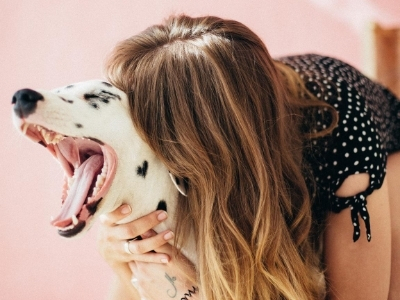Dogs possess expansive hearts, minds and spirits. They ex¬perience a full range of emotions, just as humans do. While each dog is unique, there exists a universal body language that ex¬presses certain ranges of feelings and needs; called calming sig¬nals.
Calming signals are body gestures and postures that dogs of all species (including humans) use to communicate with others. Learning to read and interpret your dog’s behaviour and expressions can help you deepen your relationship, over¬come misunderstandings and help them lead more peaceful and fulfilling lives.
Yawning
Yawning indicates tension in the body. Tension may be positive (excited to go to the park) or negative (anxious about getting a bath). When tension arises, breathing becomes more shallow and infrequent. Yawning releases tension and brings much needed oxygen into the body.

Calming signal yawn - constricted muscles around cheeks and face.
Scratching, licking (or fidgeting)
Scratching or licking also releases tension in the body. A cat licks her paws to release tension after she lashes out at a friend in the before-dinner excitement. A dog sits down to scratch immedi¬ately after hearing a loud sound that startles him.

Calming signal scratch - often paired with a yawn. Often looks quite "disorganized" and unplanned.

Non-Calming-Signal scratch - completely relaxed and engrossed in the activity of scratching that itch.
Turning the head or body
Averting the eyes, turning the head and turning the body away demonstrate increasing levels of discomfort or concern with someone or something. A dog turns his head away from the friendly stranger attempting to pet him, politely showing his dis¬comfort with the greeting. A cat looks away from her lady as she says good-bye before leaving for work, withdrawing from the exchange that makes her sad.

Calming signal turning the head - sad downcast eyes, tight lips and face and tense expression
Calming signals provide indicators of your dog’s feel¬ings and needs, so that you can better understand and support him or her. See Part 2 of this series - to explore the more intense body gesture expressions – stress indicators.
